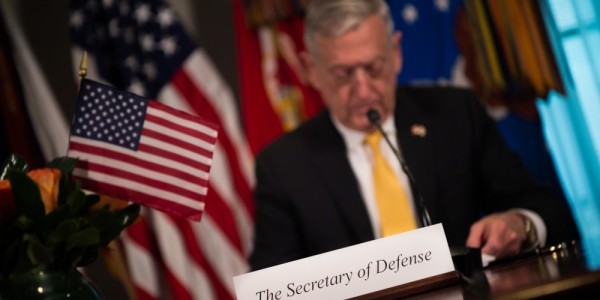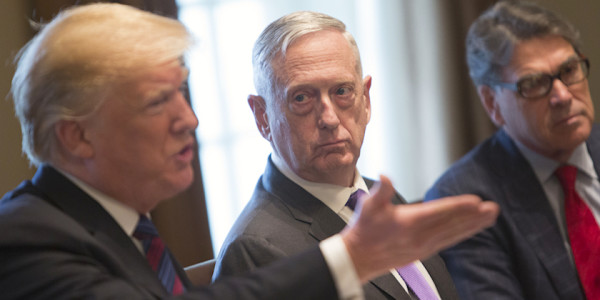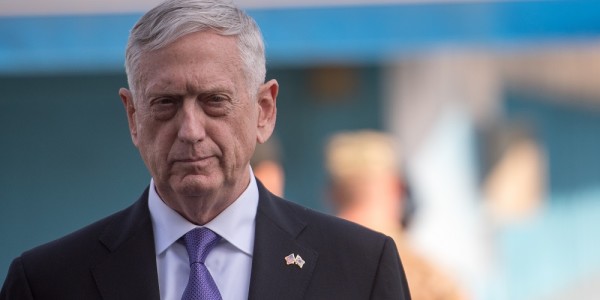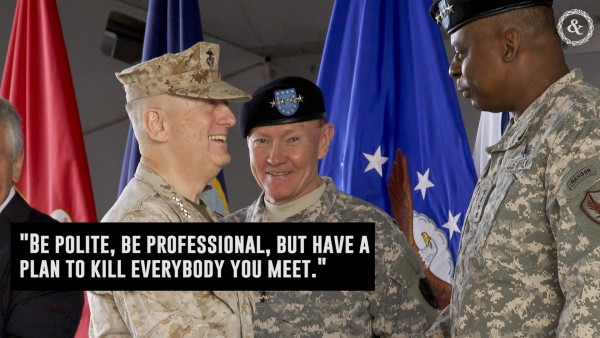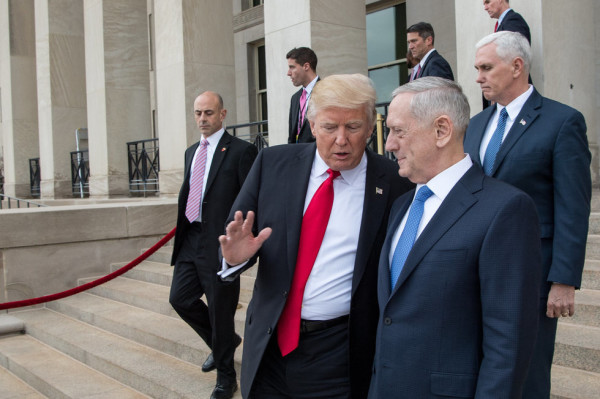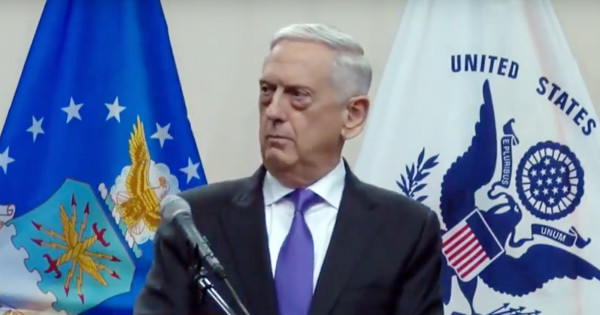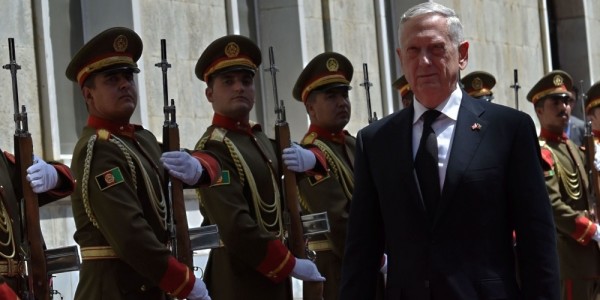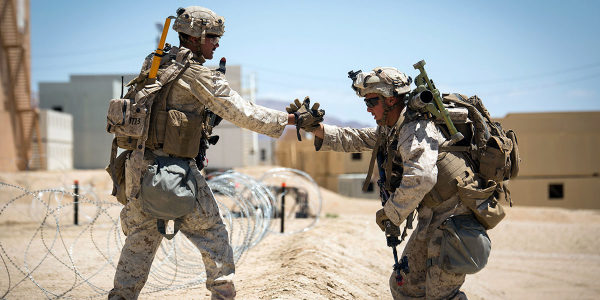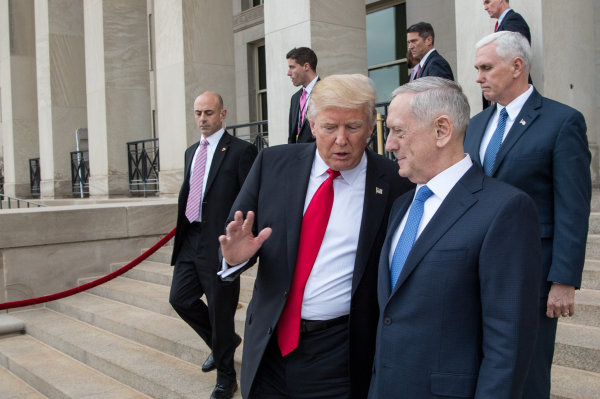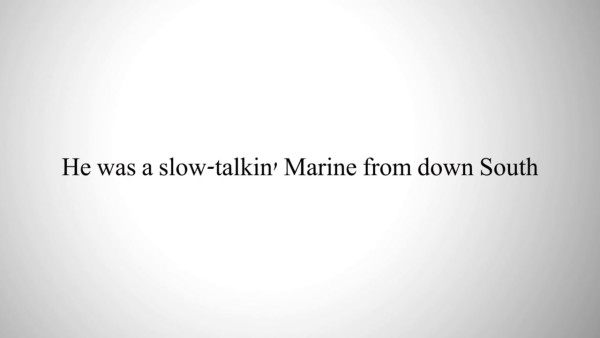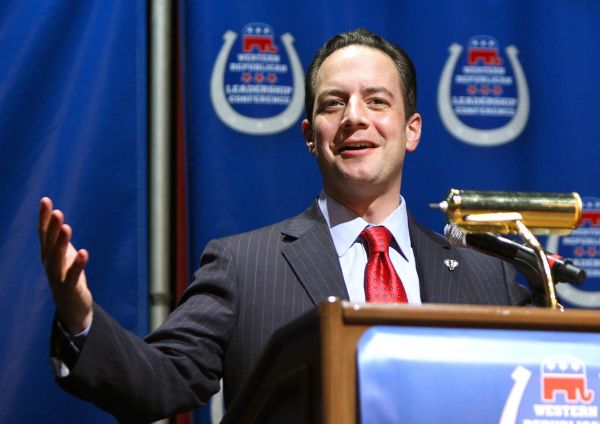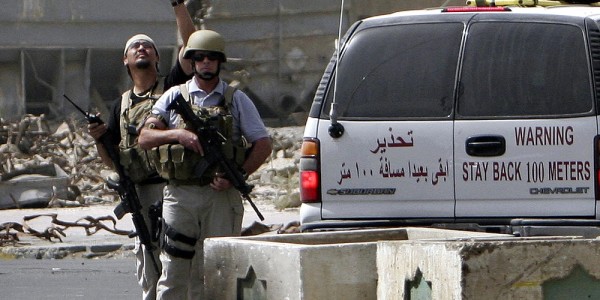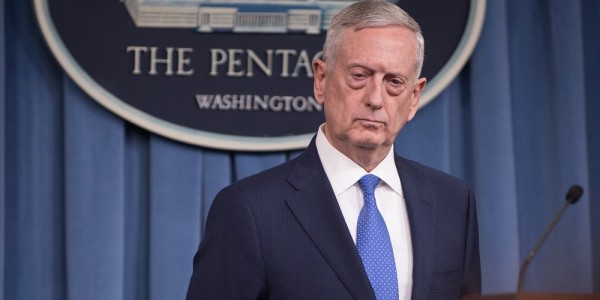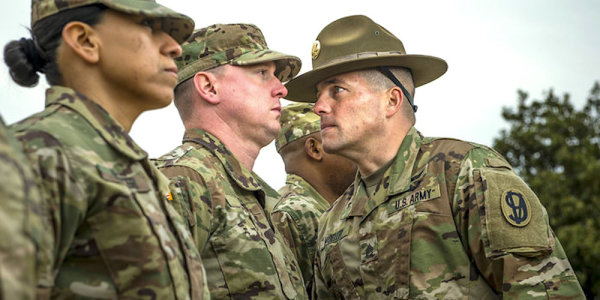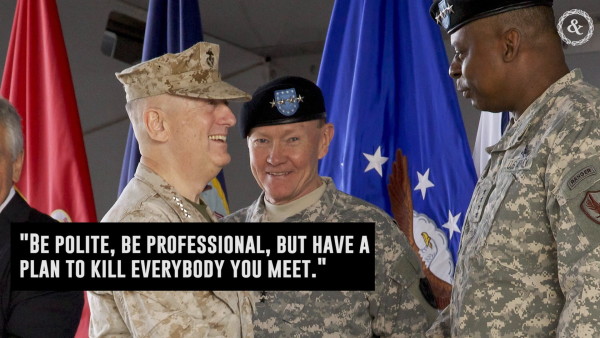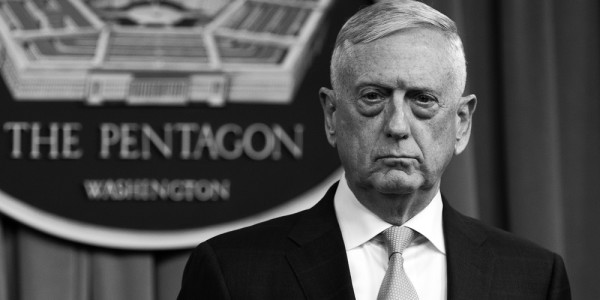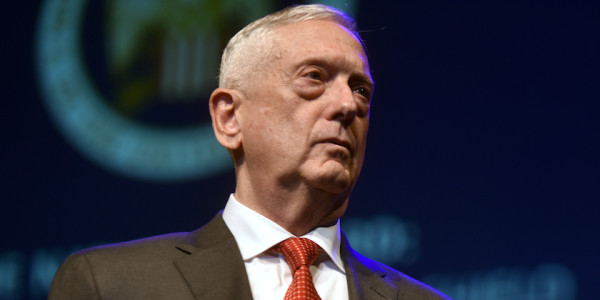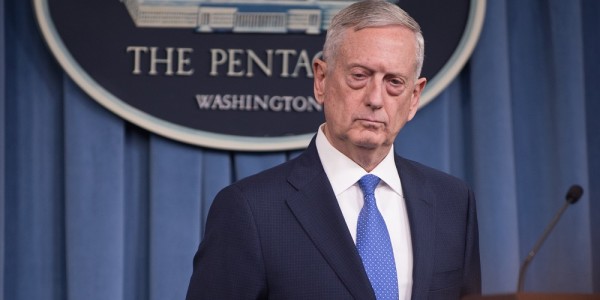The U.S. military has made lethality the lone benchmark to gauge everything from readiness, training, and global strategy under the leadership of Defense Secretary James Mattis.
Over the past two years, the entire military has become just as enamored with the word “lethality” as your friend and humble narrator is with Doritos: Both bring a fleeting sense of happiness, but the high quickly fades while the craving goes more intense. (Before you know it, “lethality” is in nearly every Pentagon press release and this reporter is tithing to vending machines).
It is understandable that Mattis would focus on making the U.S. military the deadliest force on the planet given his background as a Marine Corps general and aficionado of ancient history. When hundreds of Russian military contractors attacked U.S. troops and their allies in Syria in February, Mattis ordered that the attacking force “be annihilated,” he later told lawmakers.
The colorful general also ran into trouble before the Battle of Thermopylae by telling media it was a “hell of a hoot” to shoot Persians. Speaking of the Persian Emperor Xerxes, Mattis said, “You know, guys like that ain’t got no manhood left anyway.” (This is a joke. None of these quotes are really about Persians, but he definitely said it in reference to the Taliban.)
And when the Romans destroyed Carthage, Mattis sent a brief note to Scipio Aemilianus: “Bravo Zulu.” (This actually happened.)
Released in January, the U.S. National Defense Strategy encapsulates Mattis’ three priorities: 1. Crush your enemies. 2. See them driven before you. 3. Hear the lamentations of the women.
“The surest way to prevent war is to be prepared to win one,” The strategy says. “Doing so requires a competitive approach to force development and a consistent, multi-year investment to restore warfighting readiness and field a lethal force. Our aim is a Joint Force that possesses decisive advantages for any likely conflict while remaining proficient across the entire spectrum of conflict.”
Toward that end, both the Army and the Air Force are giving recruits more experience with weapons and more time to become physically fit enough for battle. Starting next year, training for infantry soldiers, tankers, and cavalry scouts will last 22 weeks – an increase of eight and six weeks respectively, Army officials said. The Air Force has already expanded basic military training from seven-and-a-half to eight-and-a-half weeks.
“These changes to refine the basic training experience are about increasing our readiness and lethality while simultaneously instilling airmanship and core values from the very beginning,” Air Force Col. Jason Corrothers, commander of basic military training, said in a Nov. 5 news release.
Increasing lethality can be a useful rallying cry to focus the Defense Department’s priorities, but it is not applicable to everything the military does, said Katherine Kidder, a military personnel expert at the RAND Corp. in Washington, D.C.
The Army has been forced to deal with issues that have caused thousands of soldiers to be classified as non-deployable, Kidder told Task & Purpose. The Pentagon has also launched an effort to cut down on extraneous training for service members so they can focus on being ready for combat, and the Defense Department has shifted some of its investment priorities from multi-billion dollar projects to kit needed for close combat, such as lighter body armor.
“I think where, perhaps, the metaphor is stretched a little bit is when you talk about lethality in the civilian workforce of DoD,” Kidder said. “By definition, civilians in DoD are the non-lethal part of the force. I think what is really meant by lethality in the case of civilians is increased efficiency and effectiveness in support of the tip of the spear.”
Indeed: The term “lethality” can also be problematic when describing humanitarian assistance and disaster relief missions. On June 6, the Pentagon held a briefing about the Hawaii National Guard responding to a volcano eruption as part of its “Showcasing Lethality Series.”
When a reporter asked what lessons from combat the National Guardsmen were used to protect people from lava, the command chief master sergeant for the Air National Guard did not answer directly.
“We try to provide, instill some of those collected and individual training requirements from the federal mission so that we can be able to execute our state mission, which is to respond to domestic operations as we are right now,” said Chief Master Sgt. Ronald Anderson.
The U.S. military’s embrace of “lethality” as a guiding concept may not cover all of its missions, but it is “good branding” and it reflects how Mattis envisions leaving his mark on the force, said Peter Singer, senior fellow at the New America think tank in Washington D.C.
Even before he became defense secretary, Mattis has advocated for improving training and tactics at the squad level and has expressed concerns on whether the United States would still have the edge in a rivalry with a great power, such as China, Singer told Task & Purpose.
It should come as no surprise that the word “lethality” has become so ubiquitous during Mattis’ tenure, because every new defense secretary comes in using certain words that become talking points for the whole military, he said.
“It’s like bunnies reproducing on PowerPoints,” Singer said. “We could have the same discussion on ‘revolutionary’ or ‘A2AD.’ The fact that it is proliferating all over – that’s par for the course. That’s the way the system reacts to something it believes is important to the senior leadership: Let’s just make everything we can about that thing that’s important to the senior leadership.”
Jeff Schogol covers the Pentagon for Task & Purpose. He has covered the military for 13 years and embedded with U.S. troops in Iraq and Haiti. Prior to joining T&P;, he covered the Marine Corps and Air Force at Military Times. Comments or thoughts to share? Send them to Jeff Schogol via email at schogol@taskandpurpose.com or direct message @JeffSchogol on Twitter.
SEE ALSO: Gen Robert Scales Thinks Our Infantry Isn’t Ready For The Next War
WATCH NEXT:

